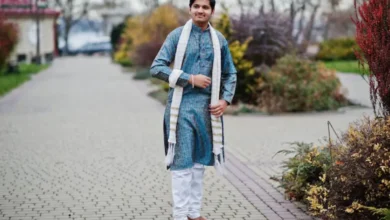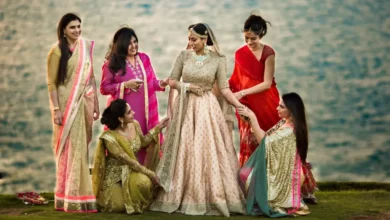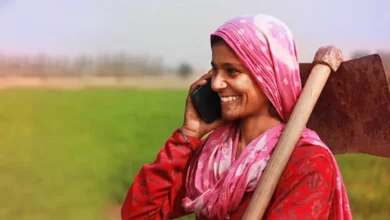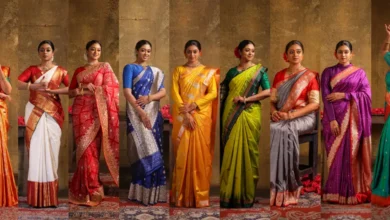What is a Sherwani?
The Sherwani is a distinguished piece of traditional Indian clothing for men, characterized by its long, coat-like structure. Typically reaching below the knee, this garment exudes elegance and sophistication. Worn predominantly on formal occasions such as weddings, festivals, and other celebrations, the Sherwani is an integral part of India’s rich cultural tapestry.
The Historical Evolution of the Sherwani
Origins in the Mughal Era
The Sherwani traces its roots back to the Mughal Empire, where it evolved as a fusion of Persian and Indian styles. Initially worn by Mughal nobles, the garment symbolized authority and grandeur.
The British Influence
During the British colonial period, the Sherwani was adapted by the Indian elite, gaining popularity as a formal alternative to Western suits. It became a cultural bridge between tradition and modernity.
Key Features of a Sherwani
1. Fabric
Sherwanis are crafted from luxurious fabrics such as:
See also The Iconic Salwar Kameez: A Timeless Symbol of Indian Tradition and Style
The Iconic Salwar Kameez: A Timeless Symbol of Indian Tradition and Style- Silk: Known for its sheen and richness.
- Brocade: Featuring intricate woven patterns.
- Velvet: A popular choice for winter weddings.
2. Embellishments
Exquisite embroidery, beadwork, and zari (gold or silver thread) elevate the Sherwani’s opulence.
3. Structure
The Sherwani is tailored to fit snugly, enhancing the wearer’s posture and silhouette.
Types of Sherwani
1. Classic Sherwani
Minimalistic in design, often featuring solid colors and subtle patterns, this type suits traditional ceremonies.
2. Jodhpuri Sherwani
Inspired by royal Rajasthani attire, it includes a Nehru-style collar and ornate buttons.
See also Exploring Traditional Clothing in Japan: The Timeless Elegance of Haori
Exploring Traditional Clothing in Japan: The Timeless Elegance of Haori3. Indo-Western Sherwani
Combining traditional elements with modern cuts, this style is favored by younger generations.
4. Achkan Sherwani
Slightly shorter than the classic Sherwani, the Achkan is lightweight and often worn in warmer climates.
5. Angrakha Sherwani
Characterized by its overlapping front panels, this design has a regal flair.
The Symbolism of Sherwani in Indian Culture

A Mark of Prestige
The Sherwani is more than a garment—it’s a symbol of honor and dignity, often worn during significant life events like weddings.
Cultural Identity
For many, wearing a Sherwani reaffirms their connection to Indian traditions and heritage.
When to Wear a Sherwani
1. Weddings
The Sherwani is the quintessential wedding attire for grooms across India. Paired with a turban and mojari (traditional footwear), it creates a regal look.
2. Festivals
Festivals like Diwali, Eid, and Navratri see men donning Sherwanis to embrace the festive spirit.
3. Official Events
In some formal events, especially those emphasizing Indian culture, the Sherwani serves as an elegant choice.
Styling a Sherwani
Accessories to Pair with a Sherwani

- Turban: Adds a royal touch.
- Dupatta: A decorative stole draped over the shoulder.
- Kamarbandh: A waist sash for added sophistication.
- Brooches and Chains: Enhances the opulence.
Footwear
Traditional footwear like mojaris or juttis complements the Sherwani’s aesthetic.
Sherwani Colors: What They Represent
1. Red and Maroon
Associated with vitality and prosperity, these are common choices for weddings.
2. Gold and Cream
Exude sophistication and are ideal for formal events.
3. Pastels
Modern and trendy, pastel shades are perfect for daytime occasions.
Regional Variations in Sherwani Design
1. North India
Heavily embroidered Sherwanis dominate, often featuring intricate zari work.
2. South India
Focuses on lightweight fabrics like silk, often in cream or gold tones.
3. Rajasthan and Gujarat
Known for vibrant colors and mirror work detailing.
The Modern Revival of Sherwani
Bollywood’s Influence
Indian cinema has played a pivotal role in reviving the popularity of Sherwanis. Iconic movies showcase leading actors in regal Sherwani ensembles, inspiring fashion trends.
Global Appeal
The Sherwani has gained international recognition, often worn by Indian diaspora at multicultural events.
Caring for Your Sherwani
1. Cleaning
- Opt for dry cleaning to preserve the fabric and embroidery.
- Avoid washing heavy Sherwanis at home.
2. Storage
- Store in a breathable fabric cover to prevent damage.
- Use silica gel packets to avoid moisture buildup.
Customizing Your Sherwani
Tailored Fit
A custom-made Sherwani ensures a perfect fit, enhancing both comfort and style.
Personalized Embellishments
Add monograms, family crests, or unique patterns to make your Sherwani one of a kind.
Sustainable Sherwani Options
In response to environmental concerns, designers now offer:
- Organic Fabrics: Cotton silk blends.
- Eco-Friendly Embroidery: Using recycled threads.
- Rental Services: An affordable and sustainable choice.
The Economics of Sherwani
Cost Factors
The price of a Sherwani depends on:
- Fabric quality.
- Level of embroidery.
- Designer reputation.
Investment Value
A Sherwani is a timeless addition to any wardrobe, often passed down as a family heirloom.
Embracing the Heritage
The Sherwani stands as a testament to India’s enduring tradition and craftsmanship. From its Mughal origins to its modern adaptations, it embodies a rich cultural legacy. Worn with pride, this timeless garment connects past generations with the present, blending tradition with contemporary style.




